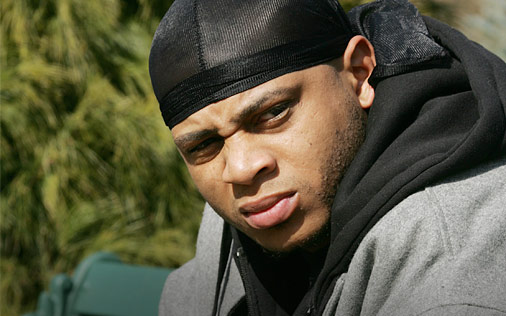The Wire: Social Structure (the game is rigged)
 Season 4 of The Wire just dropped on DVD, so this weekend I was glued to the telly and composing armchair academic essays about the structure of this B’more world. Then I read media scholar Jason Mittel’s writing about the show, and decided best just to step aside and give him the mic. I’ve quoted at length cause I know yall might not click through. And this should be read:
Season 4 of The Wire just dropped on DVD, so this weekend I was glued to the telly and composing armchair academic essays about the structure of this B’more world. Then I read media scholar Jason Mittel’s writing about the show, and decided best just to step aside and give him the mic. I’ve quoted at length cause I know yall might not click through. And this should be read:
[Series creator David] Simon has suggested that The Wire is a show about the relationship between individuals and institutions, a claim that the program seems to uphold. But I would argue that the point of emphasis is much more clearly on institutions rather than individuals, as within each of the social systems that the show exploresâ€â€the police, the drug trade, the shipyard, city government, the educational systemâ€â€the institution is brought into focus through the lens of numerous characters. Certainly McNulty is a central point of access to understand police bureaucracy and functions nominally as the show’s main character, but by season four he is in the margins while characters like Daniels, Colvin, and Bunk provide alternate entry points to explore the police system.

Likewise we experience the drug trade through a range of characters from D’Angelo to Stringer, Omar to Cutty. While all of these characters have depth and complexity, we rarely see much of their existence beyond how they fit into their institutional rolesâ€â€even romantic relationships seem to foreground inter-institutional links between police, lawyers, and politicians more than interpersonal bonds deepening characters’ inner lives and motivations. The chronic alcoholism and infidelity of The Wire’s police officers offers a portrait less of flawed personalities than of a flawed institutionâ€â€the police admire the systematic discipline and coordination of Barksdale’s crew, which is distinctly lacking in the Baltimore Police Department.”
Mittel continues:
[The institutional emphasis] is not to suggest that characters in The Wire are flat or merely cardboard cutouts to enact a social simulation. One of the show’s most masterful features is its ability to create achingly human characters out of the tiniest moments and subtle gesturesâ€â€Lester sanding doll furniture, D’Angelo picking out his clothes, Bubbles walking through “Hamsterdam†trying to find himself.
“…Character depth is conveyed through the texture of everyday life on the job, a set of operating systems that ultimately work to dehumanize the characters at nearly every turn. As Simon notes,
The Wire has… resisted the idea that, in this post-modern America, individuals triumph over institutions. The institution is always bigger. It doesn’t tolerate that degree of individuality on any level for any length of time. These moments of epic characterization are inherently false. They’re all rooted in, like, old Westerns or something. Guy rides into town, cleans up the town, rides out of town. There’s no cleaning it up anymore. There’s no riding in, there’s no riding out. The town is what it is. (quoted in Mills)

In the show’s character logic, the institution is the defining element in a character’s life, externalized through practices, behaviors, and choices that deny individuality and agency…”
Bloody brilliant.
And I would humbly hazard the guess that if we did NOT see these characters through the lens of the institution, we would no doubt castigate them – Griggs for ignoring her child, McNulty + Bunk for wandering eyes, all of West Baltimore for drug dealing, etc… But within this structure and struggle, we forgive their supposed faults and love them all the more for it.


Comments:
[…] — related posts: Social Structure of The Wire […]